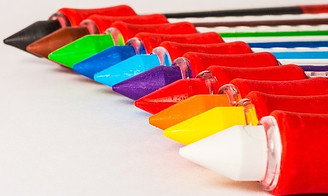 Making Money from a Hobby
Making Money from a Hobby
Making Money From a Hobby
What if you could find a way to enjoy your hobby and make a little money? Making money from hobbies is a time-honored tradition for all hobbyists. Some hobbyists earn enough to pay for their hobby, others earn enough to offset the expenditure incurred by the hobby, and yet others earn enough to quit their regular job. It’s up to you how much you want to make.
While not every hobby lends itself to great sales, the chances are favorable that most hobbies can allow you to bring in an extra income if you plan it right. If you want to make money from your hobby, continue reading to find out how. Before you begin your business, you’ll need to ensure your hobby is marketable and has an audience large enough to support your monetary needs. We’ll show you how to do all of this and much more. Let’s get you on the road to success…
How Marketable is Your Hobby?
One of the things you should consider prior to jumping into a specific business is to do a little research about the industry and the audience for that hobby. Let’s look at some factors you’ll want to consider as you contemplate turning your hobby into a business, whether it’s full-time or part-time.
How Big is The Market?
If your hobby appeals to a wide audience, statistically speaking, you are more likely to attract potential customers. Find out how many people need and want the items you offer. This is the key to deciding if you want to turn the hobby into a full-fledged business or even a part-time business. The bottom line is that if only a few people are looking for products like yours, a business may not ultimately meet your ongoing economic needs.
Are You Creating Something People Will Buy?
A lot of hobbies involve creating a physical product that someone will buy. Hobbies like baking, sewing, knitting, and others come to mind. Perhaps you enjoy writing as a hobby. Will someone buy your short stories, books, or poetry? Is something like that selling already? If so, you have more of an opportunity to earn.
What Can I Sell?
You can make money from physical products you create, such as jewelry and clothing; however, you are not limited to physical products. You can also sell digital products and services. Digital products can include information products, such as pdf reports, audio, images, and video, just to name a few. You can also offer services such as ghostwriting, web/product design, coaching, and teaching others what you know about your hobby. Not quite what you had in mind? There are more options to consider. Don’t give up on your dream for more income.
Are There Other Options to Earn Money?
There are many ways to share your knowledge and experiences while making money. One of the popular ways doesn’t even involve creating a product or service to sell. However, you will need to do some creative thinking; but you can handle that.
Instead of rushing to make a new crocheted blanket that you will need to sell and deliver, recommend the instructions you used by supplying an affiliate link to them, as well as related items such as yarn, crochet hooks, row counters, project and yarn organizers, etc. If flying model airplanes is your hobby, instead of selling planes, consider selling parts, tools, and other supplies because these hobbyists frequently prefer to build their own planes.
As you see, each hobby can be quite different. On that same note, the target audience, as well as their wants, needs, and problems are very different. To find out what is likely to work best for you, you’ll need to do detailed research.
Can I Skip the Stat Research?

In order to identify specific, viable options, for your potential business, you’ll need to do your research. Among other things, you’ll want to find out the details about your target audience, including their demographics, wants needs, and problems. In addition, you’ll also want to learn more about the industry (the hobby/business category) and the marketplace competition you’ll have. This may sound like a lot but the more you know, the more likely your business will be able to meet your needs and your customers’ needs.
One of the best ways to find the information you need is to use Google Search. You’ll want to look for stats about your industry, your target market, and popular products or services that are currently available.
Knowing the numbers related to your hobby and the corresponding business industry will help you make sound choices and decisions. Highly detailed stats regarding your market’s spending levels and other preferences will help you figure out how many people you’ll need to reach and convert on a regular basis to earn the kind of income you want. (note: Jay Oneil with Wealthy Affiliate (WA) offers a great teaching webinar on Advanced Market Research to WA premium members).
How Are Others Making Money From the Hobby?
Find out if you can make money from your hobby by checking out how many competitors there are, what they are doing, and what they offer. Find out what their best selling items are. Research complaints and suggestions related to products you are interested in selling. When you find a loophole or gap where a need isn’t being met, plan to create a similar item and enhance it to meet the needs of your audience. In essence, you want to get creative and “build a better mouse-trap,” so to speak.
Don’t limit yourself to looking only at the hobby or craft niche you’re in. Identify hobbies and crafts that are similar to your own. For example, if your hobby/craft is crocheting, you’ll also want to look at knitting, macramé, embroidery, quilting, and other “sewing” related hobbies. This can be helpful in giving you crossover ideas. In addition, many hobbyists and crafters have multiple interests.
Selling Your Hobby/Craft Items
If you make an item that you want to sell to the public, it’s important that the product is attractive, works as advertised, follows all local and nation-wide safety rules and laws. This is harder if you’re making items for children, pets, edible items, or skin products. There may be special laws regarding selling your product, so you’ll need to check into what is required of you and/or your business, from a legal perspective.
- Check the Laws – Every state, city, and/or county has its own laws regarding selling your handmade items. If you’re going to teach people how to do the craft, there may be additional regulations or restrictions, depending on the materials or methods being used. It’s always a good idea to understand all laws surrounding your industry including the local laws that affect you.
- Systemize Creation Process – If you want to be able to enjoy your hobby while selling the things you make, you’ll need to systemize the process and get slightly ahead so that your customers won’t have to wait too long for their product.
- Get Legal – Make sure you have a business license and all appropriate licenses for your area before you start making sales. You don’t want to get a surprise fine because you overlooked or ignored this step
- Offer Multiple Payment Possibilities – When you are selling your craft items, it’s going to be easier to make more sales if you allow your customers to pay in the way they’re most comfortable. For example, cash, check, and credit. If you sell items online, you’ll want to take payment processors that help protect consumers like Paypal.com and Strip.com.
- Price Your Products Right – Many hobbyists tend to price their work too low. Check online and offline what your type of items normally goes for before pricing. Keep in mind all the resources you use to create your craft. For example, time, money, and expertise. Don’t undercharge for your time and expertise
Turning your craft into a salable item simply requires that you think more about how your customer’s experience will go when they buy your item. Will they feel as if it’s a good experience? Will they be glad they spent the extra money on the handmade item instead of buying the mass-produced quantity?
Hobby Related Services

One exciting way to monetize your hobby is to turn it into a service instead of, or in addition to, selling the product directly. You can coach, teach, and write about the topic. Let’s look at the ways you can turn your hobby into a service.
- Coaching – Anytime you’ve successfully done something you can also successfully help someone else through that same thing. For example, if you started a business with your hobby successfully you can coach others to do the same thing.
- Teaching – Anything that you know how to do is an opportunity to teach someone else to do it. It doesn’t matter if it’s painting, knitting, sewing, decorating, cooking, jewelry making and so forth. You can teach people via small workshops or a lot of people asynchronously using online
- Writing – There are lots of ways to approach earning money writing about your hobby. You can start a blog sharing your projects, your how-to’s and the resources that you love to use. You may even get sponsors who want you to use their products to help earn more money
- Create Videos – This is a great way for any hobbyist to earn money. You can create videos, each with a different goal in mind. For example, you can demonstrate how to do something, share how you make money, talk about products you like to use and more. In short, you can serve your audience by being their go-to source for specific hobby information
- Create eBooks – One way to provide a service to your audience is to create an eBook of different patterns or examples, or “how to’s” Even though the book is digital they can print the patterns out themselves. These How-to and tips ebooks can be sold as digital downloads to your site visitors.
Depending on your hobby, there may be additional ways you can help your audience. For example, you can provide a service that helps others organize their hobby or crafting by going into their homes and assisting them directly.
Another service that may work with your hobby/craft is to offer a beginner’s class, to help people get started in the hobby. Once you do this, you may want to offer a more advanced class later to show them great ways to sell their items.
Where to Sell Your Products and Services (online and offline)
One of the factors you need to figure out is where you’re going to sell your hobby-related products and services. It really depends on the nature of the product or service on how you can distribute it, but these are some places you can sell your products and services online and offline.
- Local Craft Fairs – You likely have some local markets in your area that you can sell at. Take a walk around any place you think you want to sell to make sure it’s right for you. If you don’t have direct competition that’s even better. Check their rules, find out the fees, ensure you have the right licenses, and try it out.
- Farmer’s Markets – Even though most people think of farmer’s markets and think only of food, you can sell all sorts of things at farmer’s markets. Some of them have websites with the rules listed. Otherwise, you can call them and ask if you can sell your crafts at the market.
- Flea Markets – Every area has at least one flea market that is set up to run often and on a permanent basis usually on weekends but sometimes Friday – Monday. Usually, you can sell whatever you want (within the law) at the market and you’re only charged for the space that you rent.
- A Shop – Depending on your hobby, you might consider opening a storefront. A small store can often be very lucrative. If you can’t make enough items to make it profitable by yourself, consider cosigning other people’s work too.
- Shopify Store – You can start your own online store using software like Shopify.com, which is easy to set up so that you can make sales online and control inventory too
- Etsy.com – This site is specifically for people who make things hand made or otherwise somehow serve those who do. For example, you can sew and sell items you sew but if you have a good source, you can also sell thread, material, and buttons.
- Amazon Handmade – This is a great alternative to sell your hand made items. It’s harder to get in the “Amazon Handmade” system but once you do, you can sell more because people trust Amazon and their payment processing system.
- eBay.com – The barriers to entry are lower for eBay than a lot of others so anyone who sells a product should try listing on eBay. You’ll have to pack and ship yourself but that’s okay because packing and shipping give you an extra opportunity to wow your customer through your packing and shipping.
- AbsoluteArts.com – This site lets artists list their own creations for sale. They even have some lessons and teaching about how to sell your own crafts available to their members.
- Aftcra.com – If you create high quality, hand made items you can sell them on this site easily. You must have a PayPal.com account to get started.
- Deviantart.com – If you’re an artist, you can use their system to upload your art onto different mediums from t-shirts to canvas to shoes. Your customers can search for products or you can provide links directly.
- Facebook Marketplace – This is also an easy entry idea. Everyone has access to the Facebook Marketplace. You can even set up your own selling group too.
- Social Media – You can also use Instagram, Pinterest, and other social platforms to sell your products and even services.
The awesome part about deciding to sell your products or services is that you can sell them in multiple places. You can put your products and services in multiple places. You should of course, always have your own website in addition to any given platform you choose to use. Let’s talk about next about what you need to market your business.
How to Market Your Hobby

Marketing handmade products or services effectively relies on understanding that your products are unique to you and probably your customers. When people want to give someone a special gift, they look for high quality, unique, and relevant personal items. These are usually perceived as being highly valuable. That doesn’t mean you can charge and get a fortune for your items. It means you can charge a fair, yet slightly higher price than mass-produced similar items.
Website
The first thing you need to do when you decide to open a business or shop is to map out the content you’ll house on the site, such as sections, topics, categories, pages, and sections you’ll need on the site. This is the foundation and framework of your online home/shop. Then, set up a website. Your website needs to provide information about your hobby as well as address your potential customers’ questions and problems. You should include an about page, a shopping cart, a blog so that you can include information and content of interest to your audience.
Social Media
Get an account on every single social media platform that your audience uses and share information to them on a regular basis. The best information to share is anything you put on your blog including blog posts, sales pages, curated content, educational content and more.
Online Marketplaces
Facebook has a marketplace, and different sites like Etsy.com, DiviantArt.com and so forth are online marketplaces that allow crafters and artists to list the things they make for a price. The reason listing in some of these places in addition to your website is that the more links you have elsewhere the more you’ll spread brand awareness.
Content
One of the best ways of marketing online is to use your content. Content is anything you put on your site in a blog, or an article, or on a sales page. In fact, all the information you provide your audience via your website is content. Content provides information, spreads awareness, and helps with search engine optimization.
Local Markets & Events
For greater brand awareness, you’ll need to get more traffic to your site to buy your items. This can happen via local markets and events too. When you go to local, crafting events ensure that you set your table up in a way that your brand is noticeable right upfront.
Paid Advertising
The fastest way to get attention is to start paying for advertising. Thankfully, you don’t have to spend a lot of money to get started with paid ads. You can use Facebook Ads, and other platform-specific advertising to gain brand awareness faster.
Work with Influencers
An influencer is someone who has an audience that likes to buy and do what the influencer does. You don’t have to find one with more than 10,000 subscribers. In fact, smaller channels that have an article following can be much more lucrative especially for hand made items and personal services relating to hobbies.
Testimonials
When you do start making sales, within a few days of purchase ask your customer to provide a testimonial or rating for your products or services. Add them to your site where the customer can see what was said. This will help build trust with your visitors and help turn them into customers.
Amazing Photography
This is especially true when your products are crafts that you’ve handmade. Taking great photographs of your work so that your potential buyers can see the quality of your work is going to go a long way to helping you make more sales and market your hobby so that you can make money from them.
Create a Marketing Funnel
No matter what you’re selling, marketing funnels or sales funnels can help you organize and automate your marketing process online. The way it works is you do something to attract them to your site, then something to keep them on the site, something more to make them sign up for your email list. Then you will market to them via the list to make them feel safe to buy from you.
Business Cards

Due to the nature of the hobby, you’re involved in and whether you’re selling crafts or services having a business card to give out when you want someone to contact you. Take them with you to any events so that you have an easy way to show people how to contact you.
Industry Events
Going to industry events, especially if you provide services to others in your industry is a great way to get more business. Try to get speaking engagements, setting up a table when you can, and converse with the attendees as much as you can.
Your Customers’ Events
If your ideal customer enjoys and prefers certain events, plan to attend. Having your audience all in one place is a great opportunity to spread brand awareness and to gain your audience’s trust. Sponsor the event, speak at the event, have a table at the event for added recognition.
You can start marketing your products or services as soon as you have a website. That should be your first goal. Get up a website and then make that the center of all your marketing and advertising so that you can drive enough traffic to your site. (Note: Wealthy Affilliate (WA) offers the best online training for building WordPress blogsites and affiliate marketing. They offer a FREE trial membership too)
Read my detailed REVIEW of Wealthy Affiliate or just signup up for the free TRIAL below and check it out.
Tips on How to Keep Up with Supply and Demand
When you’re making things handmade, it can be very difficult to keep up with demand if you’re not careful. However, if you learn to think a little differently, you’ll be able to succeed. The first thing you must do is realize that you’re not Walmart or Amazon.
You’re providing a product to your customer that is custom, unique, and not mass-produced. Naturally, the items you make will cost more than anything mass-produced due to your expertise, skill, and the time it takes you to finish a project.
1. Systemize Your Process
Developing a streamlined way to create the things you sell to your audience will help you get more done. Try to organize your supplies so that it’s easy to get to work. Storage is important when you’re trying to work efficiently. Ensure that you always have the right tools and materials so that you can work in an organized manner.
2. Price Your Work Correctly
One secret to ensuring that you can keep up with inventory is to price your work better. If it’s priced too high you may get a lot of orders, but it will be hard to keep up. Think about how much you want to earn this year and how many you can comfortably make and price accordingly.
3. Set Inventory Numbers in Shopping Cart
If your shopping cart system allows it, set the inventory numbers at the number you know you can make so that you don’t accidentally get too many orders. If you start noticing you’re getting sold out fast, consider raising your price again.
4. Make Standard Most Ordered Items in Advance
If there are parts of your inventory that you can make in advance so that you can get ahead of orders that will help a lot too. Think of how an assembly line works and try to organize the tasks you do in that manner to avoid backups and to be able to take more orders.
5. Pre-Order Supplies
You don’t want your progress interrupted by not having the supplies you need to get your orders made and shipped to customers in a timely manner. Remember all the parts you need to put together including packaging and shipping supplies.
6. Offer Limited Options
To make it easier don’t offer too many options so that you can make some items ahead of time. For example, offer 3, instead of 12 colors. Offer 4 sizes instead of 10. Remember, you don’t have to be Walmart. You are an expert at what you do. Your items are considered specialty merchandise. It has a higher perceived value because it is more unique.
7. Be Specific About Time Lines
On your website and any shopping cart, you use, be sure to list all the information that you need to so that they understand how long it’s going to take to get their item. For example, if you don’t start making the item until after it’s ordered and paid for, make sure this is understood in the information they see prior to ordering.
8. Outsource
There is a way that you can make more items. You can find others who want to make money using their skill and who will follow your pattern and directions in terms of shipping out the item as if it comes from your company.
Keeping up with supply and demand can seem daunting. Crafting a plan, systemizing everything that’s possible, and being realistic about what can be done during the time frame that you must work is imperative to your success.
Common Mistakes to Avoid

Making money from your hobbies can be profitable if you’re careful. You’re doing an important thing right now reading this because you’re more likely to avoid common costly mistakes when trying to turn your hobby into a business.
1. Not Doing Your Research
Don’t make assumptions about anything. If you do, you’ll end up wasting both time and money trying to do something that maybe isn’t even producing the results that you desired. Worse, you may erroneously attribute your success to the wrong thing, try to repeat it, and waste a lot of time, money, and effort.
2. Not Delivering on Promises
If you say you’re going to do something, you should do it. Even though this is your hobby, once you turn it into a business it’s no longer just a hobby. Now it’s a business. Now you are responsible for living up to your promises to others.
3. Not Following the Legalities
When you start a business, it’s important to check out the laws regarding your industry. You may need to check with a business lawyer, a CPA, and other professionals to help you navigate this part of starting a business making money from your hobbies.
4. Not Keeping Track of Income & Expenses
As a business owner, you need to have a legal way to keep track of income and expenses. The IRS makes the rules on this. Be sure to read the relevant business publication about starting a business based on your hobbies. Remember, just because you have a hobby that you’re going to earn money off doesn’t mean the IRS thinks your business is always a hobby.
5. Not Making Business Goals
When you start a business making goals and putting them in writing is imperative. Think of this as your business planning. When you craft a business plan, you’ll include your goals and how you’ll meet each one, step-by-step.
Avoiding these common mistakes will ensure that you don’t fail at your business goals when turning your hobby into an income source. You’ll be able to track finances, customer desire, and more if you set everything up properly from the start.
10 Tips for Hobby Business Success

Now that you’ve learned all about turning your hobby into a business that produces income for you, it’s time to put it all together so that you can turn your hobby business into a real success. It’s all about changing your mindset to that of a business instead of a hobby. That may take some adjustments, but it can be done.
1. Get Your Finances in Order
When you have a business, you need to keep the business and personal finances separate. When you have a hobby, you don’t normally keep things separate. With a business, it’s imperative to keep the money organized so that you know what products are most profitable, and the best places to market your business, plus whether you’re sticking to your budget or not. You can use Go Daddy Bookkeeping, Quickbooks.com, or other software to keep track of your finances mostly automatically.
2. Know What Want
You may only want a side business that brings in extra pocket money or offset your hobby expensive. You may want a bigger business that will support your entire family. Anything is possible, but you need to know for sure what you want out of your hobby turned business venture. Know your own mind and if you’re not sure, try to be more introspective so that you can learn more about yourself.
3. Write Down Every Way You Can Earn from Your Hobby
Don’t assume the only way to make money from your hobby is the product of it. After all, there are hobbies that people like participating in that don’t produce a product like pottery, painting, or other crafts. Your hobby might be organizing, or gardening, or flying model airplanes. Whatever the hobby is, you can produce income from it, but you may have to think outside the box. You may want to serve others who enjoy your hobby and not just customers who want to buy the product if one exists.
4. Be Realistic About Business Expectations
Turning your hobby into a business can seem great until you’re doing it and you end up not looking as forward to your business as you thought you would. After all, as the old saying goes, “Do something you love and you’ll never work a day in your life.” Then there is the reality. Sometimes that reality means that you now really dislike your hobby. Make sure that you’re going to be okay doing it even when you’re tired of it.
5. Don’t Quit Your Day Job Yet
Don’t get too excited, even after you finish the startup tasks that you need to do and quit your job. Ensure that you have replaced your income or have a replacement of some kind so that you don’t get into trouble trying to run your business due to a cash shortage. Set a budget that’s based on reality so that you can stick to it.
6. Write a Business Plan
Your business plan can be just one page. It doesn’t have to be a large document. Nevertheless, it is important that you write it down. Even if you’re the only one who will ever see it having a plan written down that you can get up each day and follow will make all the difference in your success turning your hobby into a viable business.
7. Understand the Legalities
During your research, while you’re writing a business plan, you’ll want to ensure that you research the legalities. The worst thing that could happen is you spend a lot of time, money, and effort starting a business that turns out to be illegal. Don’t waste your time. Do the needed research.
8. Change Your Mindset
Now that you’re going to start a business, even though it’s a hobby right now, it’s time to change your mindset to that of a business owner instead of a hobbyist. A business owner organizes, plans, and implements their vision daily not just when they feel like doing it. This alone may be the biggest adjustment.
9. Educate Yourself About Marketing
Every single business will be more successful if they understand the importance of marketing. All aspects of marketing are important whether online, offline, content-based or paid advertising based. The more you know about marketing, and the more you implement what you know about marketing the more successful your business will be.
10. Consider Your Brand’s Voice and Value
When you’re developing your hobby into a business, think about how you want to brand your business that makes the most sense. This will have to be decided after you determine how you’ll earn money. Consistency is an important factor in everything you do.
Making money from your hobbies can be lucrative, but it can also be a huge transition to make. Your hobby brings you great joy and relaxation to your life. You’ll need to consider whether it still does this if you’re not doing it for fun any longer. More than likely if you earn enough money any drawbacks will be minimal. However, going in with your eyes wide open will truly help you succeed.
Now that you understand what to do to make your hobby a real business, it’s time to get started. Start with research into the legalities of what you want to do so that you know what to expect before you start anything. Move toward making your business plan and finally implement the chronological steps you create to reach those goals.
Comments
I love getting questions and comments from site visitors, please leave yours below and also share this post with friends who may be interested too. -Shirley
NOTE: This page contains affiliate links, which, if clicked on and a product purchased, I receive a small commission (with no increase in price to you)

